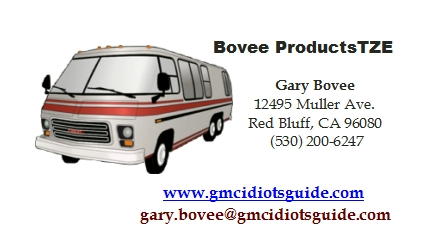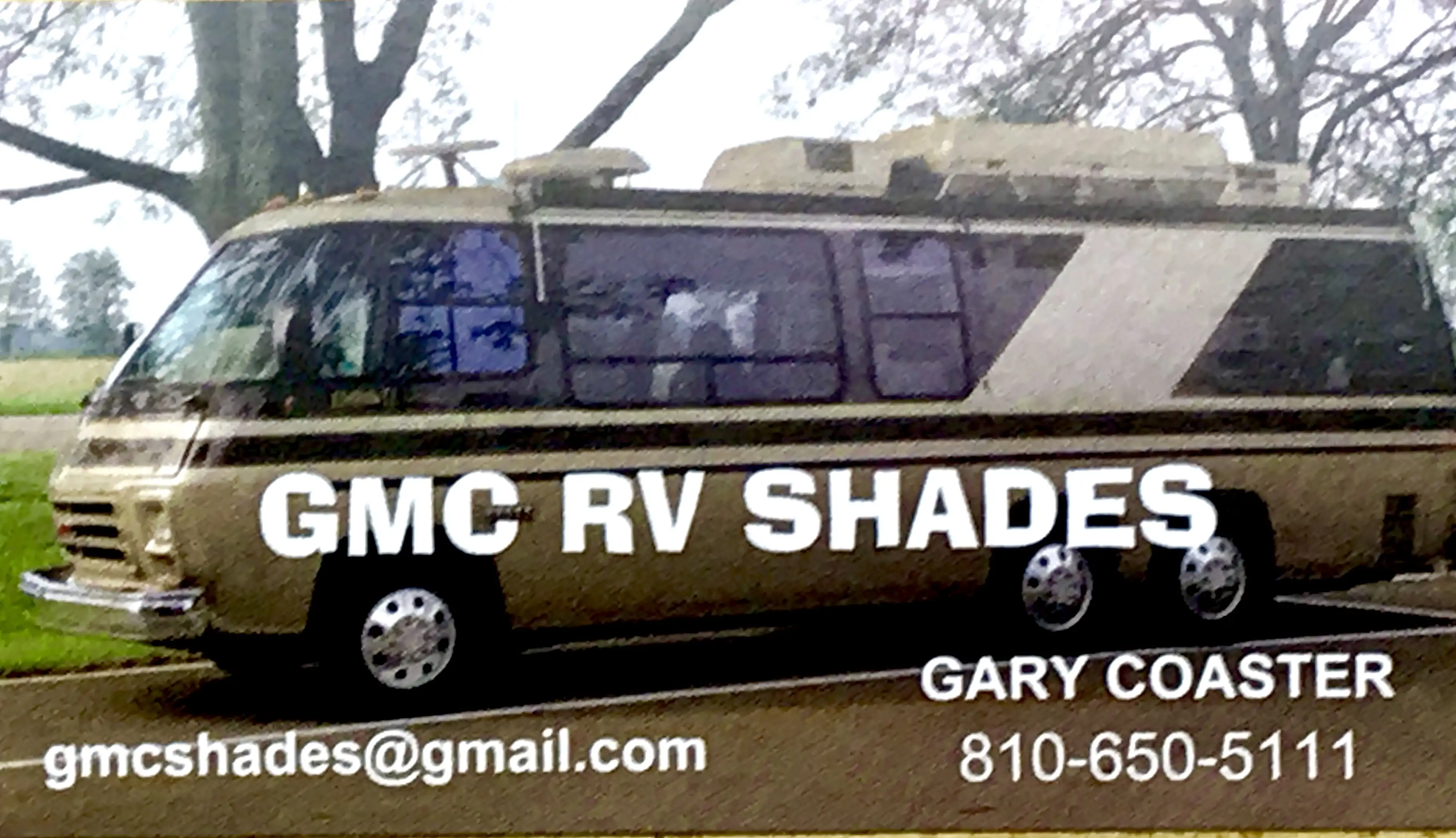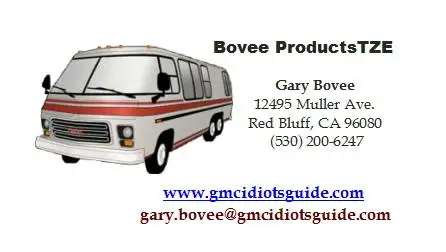The following message was written for the November 2012 newsletter.
Hello fellow GMCers. I would like to thank you for the opportunity to serve the GMCWS community in this position. I was surprised when I was asked by the Nominating Committee to consider running for the position, but thought that it would be a good way to lend my support to the Club.
I have owned my GMC coach only two years and been member of the GMCWS for such a short period. But I have really enjoyed the rallies, the friendships I have made and the information and help I have received during this time. After buying my coach, it was made road worthy by Jim Kanomata’s shop and then I started to roll to every 49er and GMCWS rally and also on short trips around No. CA. I have taken two trips with my GMC to the mid-west - one being the GMCMI Convention in Shawnee- and went to Quartzite, Az. in January .
I have put a lot of time and money into the coach both mechanically and aesthetically and I love spending time in it. It is my pride and joy.
I will draw on 45 years of being in the transportation industry and building cars to spread useful information about our coaches. But I also need your support and input on what interests you or what you have done to add value to your coach.
My working mantra has always been: SAFETY FIRST.
With that in mind we should look at the outside of the coach before we get in and start up the engine.
Check the tires –all seven for most of us.
Inspect the awning and supports- is it tight and secured?
Check for debris on the roof –small branches- and make sure your TV antenna is down.
Look under the coach for any drips or leaks.
Check the oil and coolant level.
Check that all outside compartments are secured.
Then go inside and start the engine.
During this warm up period the transmission level should be checked –with the transmission in park.
Turn on all the running lights, yes even the brake lights- the trick is to turn on the emergency flasher which uses the brake light side of the bulb- and check them.
Take on last look under the coach for leaks.
Going back inside, secure any loose objects in the cabin and close all cabinet doors.
Look at your gauges and verify that they read normal.
This should take no more than a couple of minutes and you should be able to start a great trip.
While on the road remember to drive courteously and remember you are driving a large vehicle, which takes more space than your passenger car, gets to speed slower and needs a longer distance to stop. Adjust your diving habits to the conditions of the road and the weather, since both can and will impact you negatively. During inclement weather-fog, rain, snow, sleet- slow down or pull over if you cannot see. Others might pass you with speed, but do not let them tempt you to follow. Big rigs will spray your windshield with watershed spray; slow down if you cannot see. The road can be crowned and pull your steering wheel to one side, slow down. You can better control any slipping or weaving. Watch for informational signs like height or weight restrictions, especially on secondary roads. Backing up for any length of road is not fun. Most interstate highways have 14 foot underpasses and 120,000 pound bridges. Be cautious in road work zones and slow down. Move over one lane to give workers the space to perform their duties. (It’s the law in most states) Activate your turn signals to signal a move and do it well in advance of the move. This will let others know of your intentions and give them time to react.
Now most of you will have read this and say: “I know all this”. BUT do we all practice this?
As we are in the fall and some of you need to look at preparing for the winter rains and snow, you need to winterize your coach to be able to use your coach in the spring without having to repair water lines, sanitary plumbing and remove the temporary “new” residents like rodents, spiders and other bugs. Please read the great articles on winterizing available on the web:
http://www.gmcmotorhome.info/WINTER.html (Author Emery Stora)
Also look on and search our excellent website: http://gmc.mybirdfeeder.net where some issues specific to coach models have been discussed in great detail. If you have questions please ask a fellow GMCer or on the web, they are the best source of information and are always willing to help.
Those fortunate to be able to use their coach year-round are not immune to the cold. You still need to assure that the water and sanitary tanks do not freeze on the rouge one night freeze by preparing the coach. Drain the tanks, seal any drafty holes (OK, we all have drafts we cannot stop). On nights when the temperature drops to a dangerous level, maybe you need to place a small heater inside the coach. To deter rodents you can place a rope light under the coach, rodents do not like light. This and some additional measures you deem necessary will insure you can get in and get rolling in the morning.
Please plan your trips with care, enjoy your coach and BE CAREFUL OUT THERE!
See you at the next rally.

















